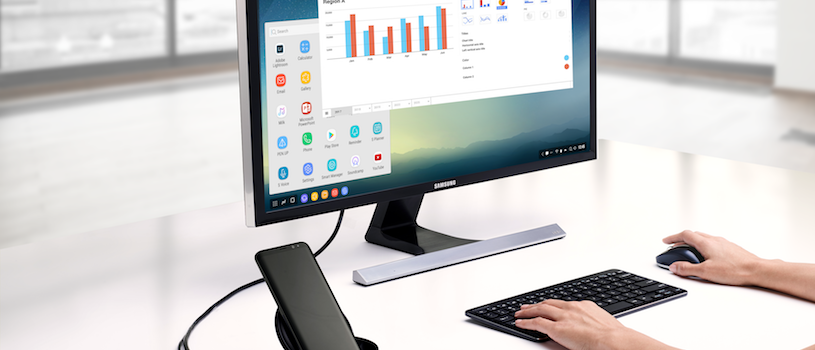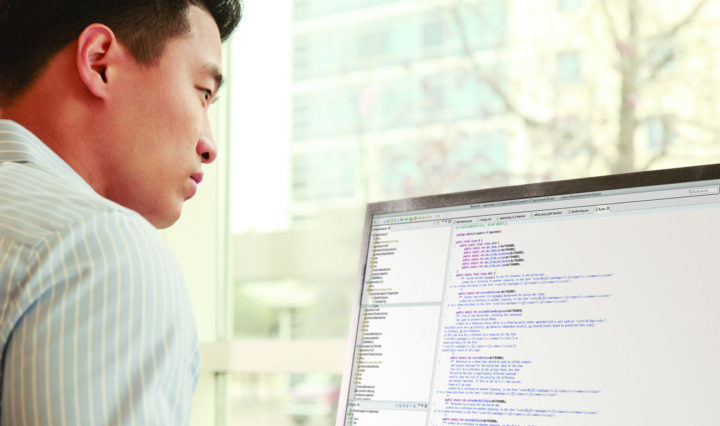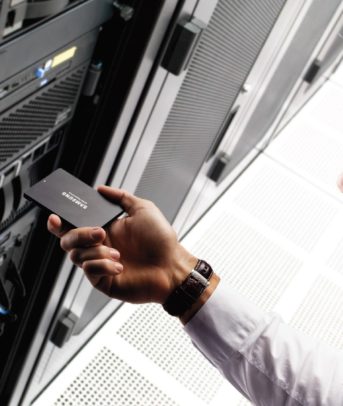In today’s mobile workforce, employees no longer have the option to be disconnected during the workday — they need access to their data any time, anywhere. By implementing a virtual desktop infrastructure (VDI), organizations can guarantee this enhanced connectivity, ensuring employees the same computing experience wherever they are in the world.
The essential structure of a VDI is a desktop interface that is centrally generated and administrated, and then delivered over a network to each of its users. This reduces the computing load on local clients while improving both security and overall efficiency.
Although companies behind the curve or on the fence about this technology might be discouraged by previous negative VDI experiences, it’s time to look past historic virtualization efforts and technologies. The contemporary generation of VDI implementations can quickly increase employee productivity.
Four main benefits of desktop virtualization for business users include:
1. Increased Simplicity for the IT Department
IT departments manage VDI from a centralized server allowing for quicker rollouts, simpler maintenance and reduced support needs when it comes to updating security, policies, software and operating systems. In addition, old and obsolete systems can be reconfigured as VDI clients, since all the complex processing is done centrally.
Better yet, expensive technology deployments become history when you deploy VDI across your enterprise. You can deploy thousands of laptops and desktop computers in less time and at lower costs. Unless there is a hardware failure, all maintenance can be done through software updates, minimizing the time IT staff must spend physically working on PCs.
2. Improved Employee Productivity
Companies today want to increase productivity at work for their employees, and VDI can help. Employees can securely access their corporate VDI desktops and data from anywhere. VDI can play an integral role in a telework or even BYOD program because it provides secure access to an employee’s desktop environment.
Additionally, a VDI client can provide a richer desktop experience than a typical mobile device, letting employees access specialized applications and functionalities on the go.
VDI’s capabilities to increase productivity at work also extend to IT administrators, who no longer must spend hours configuring PCs for new hires, as they can now clone desktops from a server.
3. Reduced Downtime for Employees and New Deployments
Using a VDI interface equates to reduced employee downtime — a valuable commodity for industries where time is of the essence. With VDI, there’s no lost user time and productivity when there’s a hardware failure. Now, a user can pull up their VDI desktop and data on another corporate or personal device without the need to configure anything.
Similarly, IT departments can deploy new equipment, get recent employees up to speed — even move or deploy a new office location at a much faster speed than if they had to tear down and set up a whole set of discrete machines and monitors.
4. Improved Continuity of Operations for the Business
VDI helps improve the Continuity of Operations (COOP) for large companies. When faced with travel delays or severe weather, having a VDI in place means employees can pick back up and start working at home or in a corporate office in another location with full access to their VDI desktop and data.
Thin Client Monitors: The Invisible Desktop
Find out why thin client monitors provide a holistic, all-in-one computing solution for enterprises. Download Now
For example, if a record winter snowstorm shuts down a metropolitan area, an employee can access their VDI desktop and the data they were working on the day before from any client — whether they’re in the office, their home or a third location, VDIs will remain consistent from location to location.
Accounting for Monitors for Your VDI
Pairing your VDI with the right type of business monitor can help improve your employees’ work environment and drive the next generation of user experience in your enterprise.
The workforce keeps changing. Workers are more mobile and may need to set up in a hotel workspace or at local or regional offices. Users can sign on anywhere and not have to worry about hardware monitor configurations and connections because they can pull up multiple displays on one monitor using VDI.
VDI and Your Future Workforce
The benefits of desktop virtualization increase productivity at work for administrators and business users alike, while improving security and COOP for companies that can’t afford the downtime.
As more companies expand their BYOD policies and address the needs of constantly connected employees, they will need a cloud-based infrastructure to support their enterprise in a way that accounts for scalability, security and flexibility.
Samsung DeX and Citrix have partnered to make secure, authenticated VDI sessions simple.








